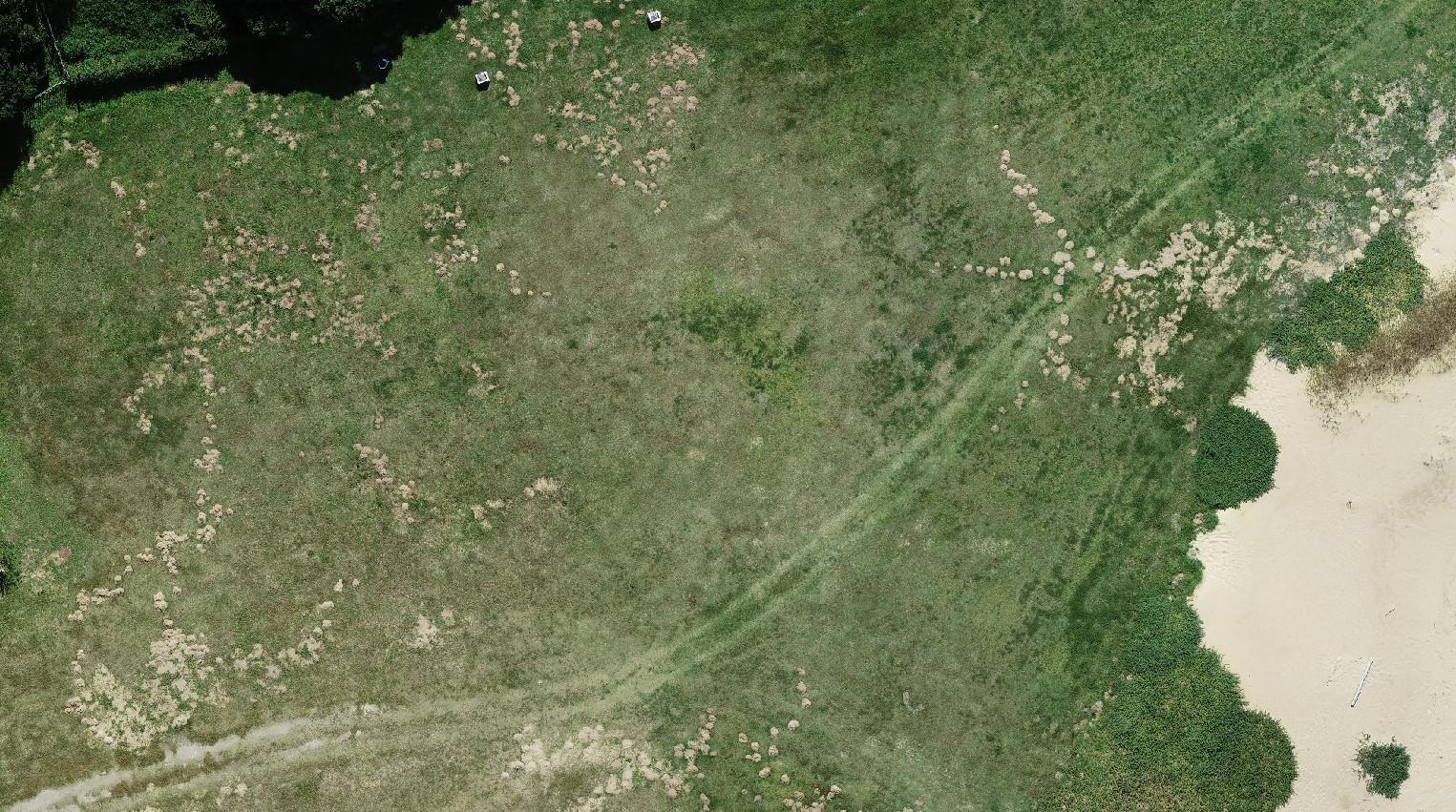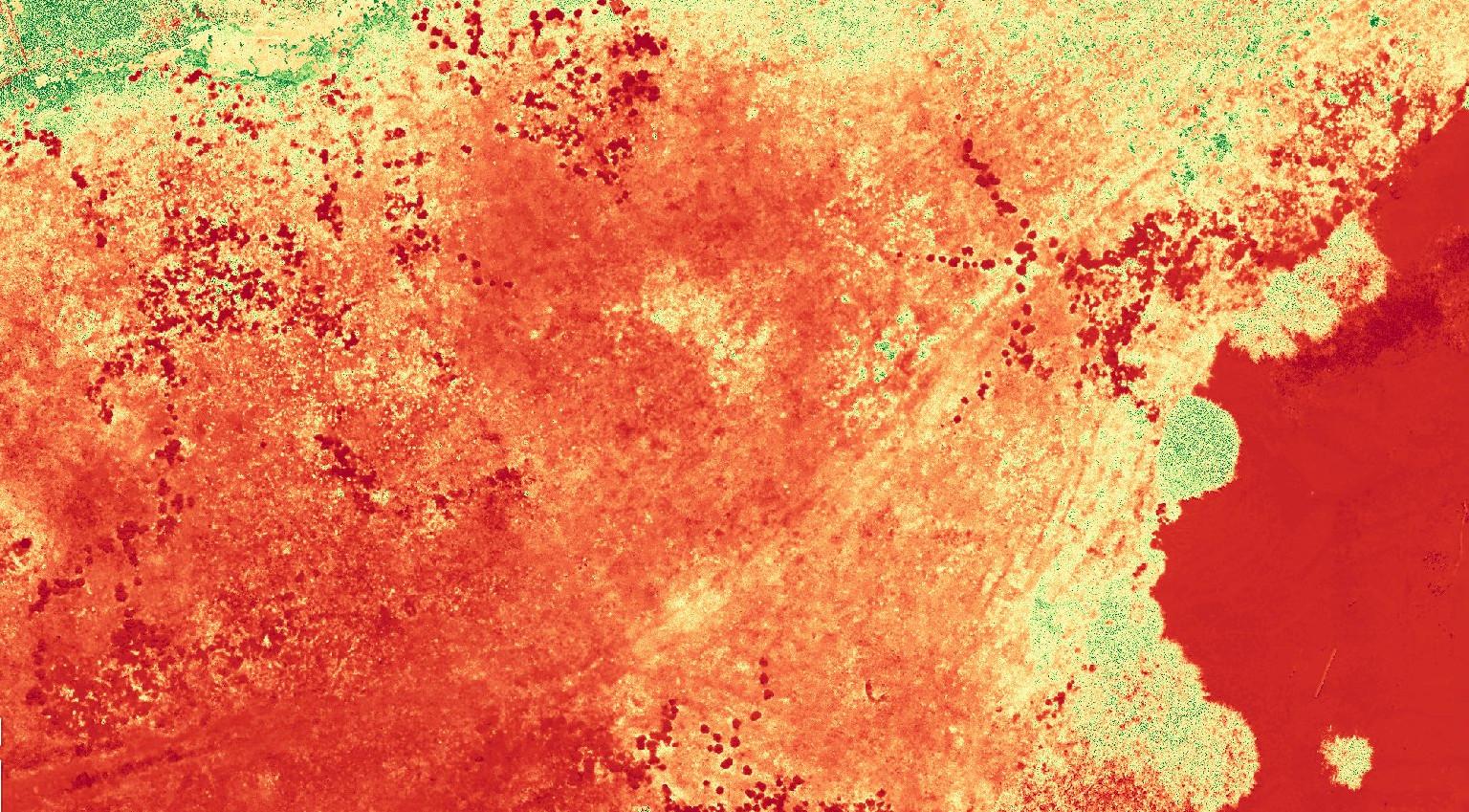Good afternoon everyone!
I am currently doing a personal study on Cape Dune Mole-Rat (Bathyergus suillus) activity in my free time along an estuary. I do not know much about Cape Dune Mole-Rats other than what I can find on the interweb and some old books I have on the shelf. I understand that they live predominantly solitary lives and have their own tunnel systems. Is there a way to tell how many individuals are in an area by the density and number of heaps in a certain location (essentially get a population estimation)? Do individuals have a central chamber from which the branch out from? Do they have territories/home ranges that overlap? My study site is 1.7 hectares and is full of the wee fellas. I have used RGB drone data to map the area over time to see where new heaps pop up and note vegetation changes as well. The area is used by the public and the grass is mowed regularly during the wet season.
 Above: RGB image of a small area of the study site
Above: RGB image of a small area of the study site

Above: Vegetation Index of the same area showing vegetation (in this case grass) health. Dark Reds = sand, bare ground (including mole heaps), Lighter Reds/Yellows = unhealthy vegetation, Green = healthy vegetation
Can anyone with knowledge about Bathyergus suillus tell me if there are any distinct observations here that stand out? Feeding areas, individual animals based on mole heap clustering, direction of burrowing relative to vegetation health (if that is a thing) etc? Also, how far do tunnels extend from the heap itself? (There is no university backing, nor am I affiliated to any university with regards to this study, it is purely for my own interest but may turn it into a project one day if I find the right backing).
Cool, thanks!
20 March 2025 12:51pm
Super cool, Sean. Once you find out how many Mole-Rats per mound, it would be interesting to correlate that to the pixels in your collected imagery. It looks like the mounds show up nicely. What is the resolution btw? Since your study site is small, however, it seems like it will be relatively easy to do a local survey once you've figured out how to count them. I'd be curious what you find out what the survey methodology will be. Are there other studies of Mole-Rats elsewhere you could adapt? Good luck!
20 March 2025 4:17pm
Hi Sean! I love that you are naturally curious and are pursuing really cool projects in your free time. I know absolutely nothing about cape dune mole rats (in fact, never heard of them prior to this post, but I will confess I was interested in the concept of a mole-rat mystery), but I did have some thoughts about where you might find more information-
It seems like the types of questions you are asking are pretty specific and niche. My first thought on how to find someone with expertise in these specific rodents was to go to their iNat page- there you can see the top observer and top identifier. Both individuals are active researchers, so I think reaching out to them on iNat or finding their e-mails from their respective organizations' sites might be a good way to get in touch.
I also did a quick search in Google Scholar in which I typed in only the scientific name and hit go. The two publications linked above caught my eye as potentially helpful in your search- particularly the first one. They excavated burrows and noted things like home range size, that males have more burrows than females, etc. I didn't go much beyond the abstracts but these seem like they might get you on the right tracks!
Happy ratting!








Vance Russell